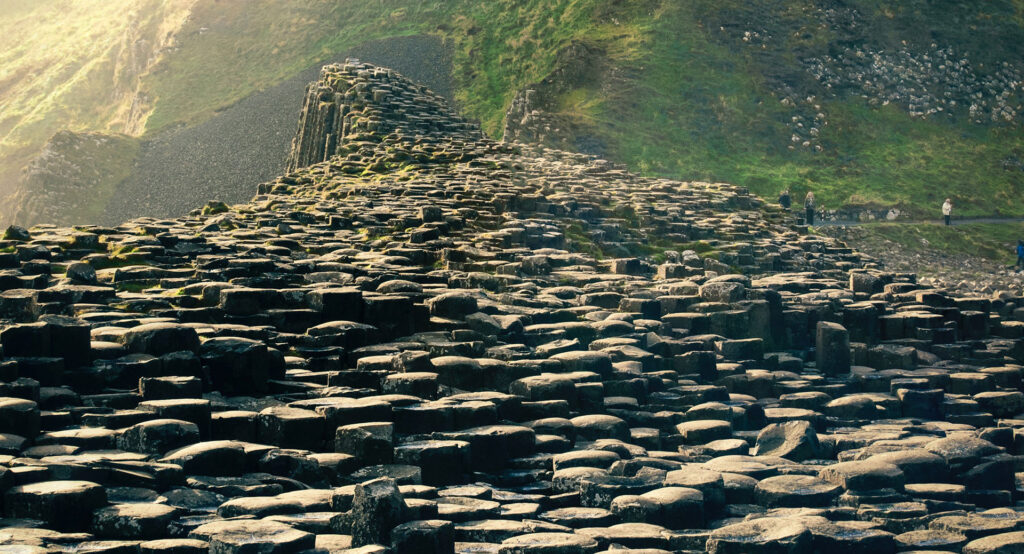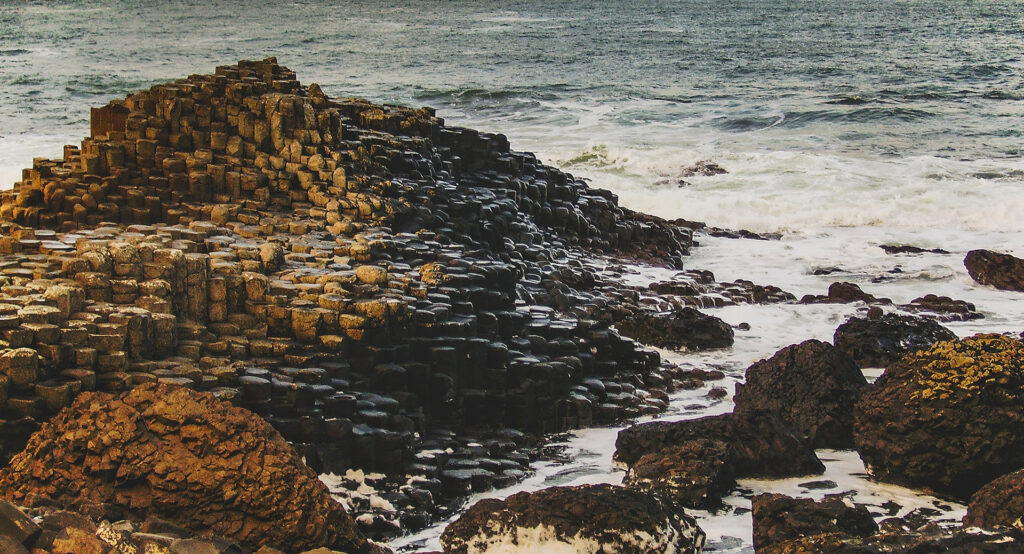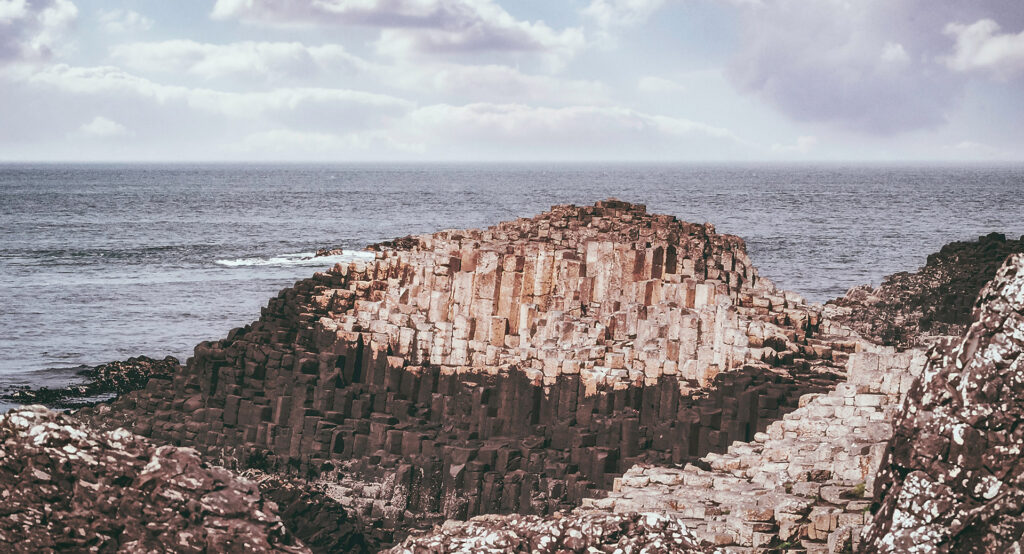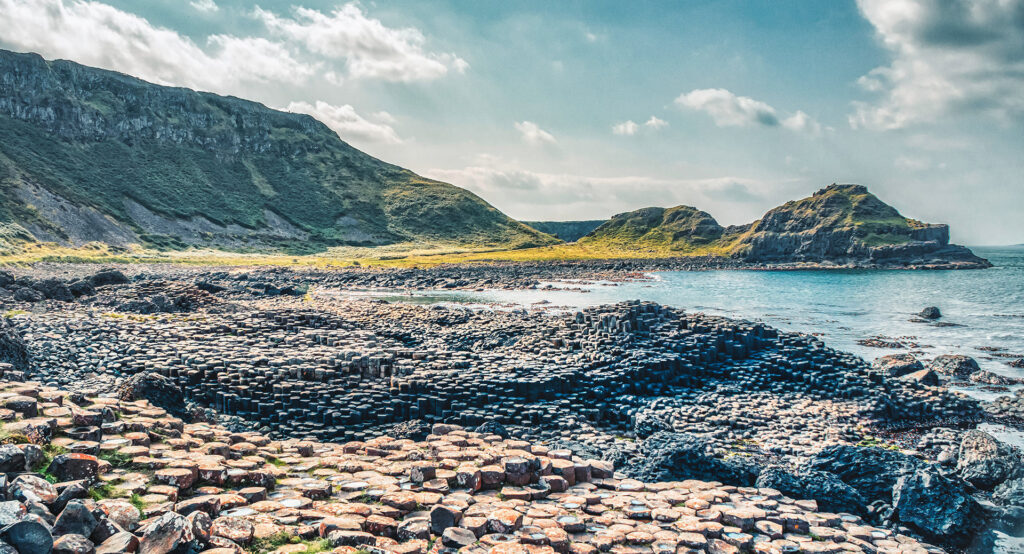14 Fascinating Facts About Giant's Causeway, Northern Ireland
Nestled along the rugged coastline of County Antrim in Northern Ireland lies one of the most remarkable natural wonders in the world – Giant’s Causeway. This geological masterpiece is a breath taking sight to behold, with its hexagonal basalt columns rising up from the crashing waves of the Atlantic Ocean.
But there’s much more to this enchanting location than meets the eye, with a treasure trove of fascinating facts waiting to be uncovered.
From the mythical stories that surround its creation to the scientific explanations behind its unique formation, here are 14 intriguing facts that will leave you awestruck by the wonders of Giant’s Causeway. So, fasten your seatbelt and let’s embark on an unforgettable journey of discovery.
The Giant’s Causeway was designated as a UNESCO World Heritage site in 1986.
1 It is widely regarded as one of the most spectacular natural attractions in the world. Its unique geological formations and stunning coastal scenery continue to captivate visitors from all over the globe.
The unique hexagonal shape of the basalt columns is a result of a volcanic eruption that took place over 60 million years ago.
2 As the lava cooled and solidified, it contracted and cracked into the distinctive hexagonal shapes that we see today. This process, known as columnar jointing, is a rare geological phenomenon that is found in only a few places around the world.
According to Irish mythology, the Giant’s Causeway was created by the giant Finn McCool, who built the causeway to cross the sea and fight his Scottish rival.
3 Finn built the causeway across the sea to reach Scotland and confront Benandonner. However, upon reaching Scotland, Finn discovered that Benandonner was much larger than he had anticipated, and retreated back to Ireland. Benandonner followed him, and when he arrived in Ireland, Finn’s clever wife disguised him as a baby.
When Benandonner saw the size of the “baby”, he assumed that Finn must be a giant indeed, and fled back to Scotland, destroying the causeway behind him so that Finn could not pursue him.
The Giant’s Causeway is not only a geological wonder, but also a rich habitat for a variety of plant and animal species.
4 The coastal landscape around the Causeway is home to rare plants like the Sea Pink and Sea Fescue, while seabirds like fulmars, kittiwakes, and guillemots nest on the cliffs and forage in the surrounding waters.
Visitors can also spot other wildlife such as seals, dolphins, and porpoises in the area. The unique ecology of the site is protected by the National Trust, which manages the area and promotes sustainable tourism practices.
The Giant’s Causeway was known to locals for centuries, but it was largely unknown to the wider world until the 17th century.
5 In 1692, a Dublin bishop named Richard Pococke visited the area and was struck by its beauty and geological significance. He wrote about the site in his travelogue, which helped to popularize the Causeway among other intellectuals and travellers of his time.
Later, in the 18th and 19th centuries, several famous writers and artists visited the Causeway, including William Wordsworth and J.M.W. Turner, further cementing its reputation as a must-see natural wonder.
The Giant’s Causeway has been a source of inspiration for artists, writers, and musicians for centuries.
6 The site’s otherworldly beauty and unique geological formations have captured the imagination of many creative minds. One of the most famous artists to be inspired by the Giant’s Causeway was the Irish poet W.B. Yeats, who wrote a poem called “The Stolen Child” which was set in the area.
The poem evokes the enchanting and mystical atmosphere of the Causeway, and captures the sense of wonder and awe that visitors often experience when they first lay eyes on the site. Other famous artists and writers who have been inspired by the Giant’s Causeway include J.M.W. Turner, who painted several stunning watercolours of the area, and C.S. Lewis, who used the Causeway as inspiration for the magical landscapes in his Chronicles of Narnia series.
The Giant’s Causeway has become a popular filming location for movies and TV shows over the years.
7 Its dramatic landscapes and otherworldly atmosphere make it an ideal setting for fantasy and adventure stories. Perhaps the most famous example of the Causeway’s use as a filming location is in the hit TV series Game of Thrones, where it served as the backdrop for several important scenes, including the Iron Islands and Dragonstone.
Other movies and TV shows that have filmed at the Causeway include the film The Medallion, starring Jackie Chan, and the BBC series The Chronicles of Narnia.
The Giant’s Causeway is famous not only for its stunning natural beauty but also for its unique geological formations.
8 The hexagonal basalt columns that make up the Causeway have been the subject of scientific study and fascination for centuries. Geologists have long been intrigued by the distinctive shapes of the columns and the complex volcanic processes that led to their formation.
The site is also a popular destination for geology enthusiasts and students, who come to learn about the unique geological features of the area and to observe the various rock formations and stratigraphic sequences.
The Giant’s Causeway has played a significant role in the history of geology and continues to inspire new scientific discoveries and research today.
The Giant’s Causeway is surrounded by stunning natural scenery, including rugged cliffs and panoramic sea views.
9 The area around the Causeway is part of the Causeway Coast and Glens Area of Outstanding Natural Beauty, which encompasses some of the most breathtaking coastal scenery in the world.
Visitors to the Causeway can take scenic walks along the cliff tops, explore hidden coves and beaches, and marvel at the dramatic rock formations that line the coast. The views from the top of the cliffs are particularly impressive, offering sweeping vistas of the North Atlantic Ocean and the rugged coastline of Northern Ireland.
The natural beauty of the Causeway and its surrounding landscape is a major draw for visitors from all over the world.
The Giant’s Causeway is a popular tourist destination and as such, it is easily accessible to visitors.
10 There is a modern visitor center located at the site, which provides information about the history, geology, and mythology of the Causeway. The center also offers guided tours of the area, which are led by knowledgeable local guides and provide a detailed insight into the site’s many fascinating features.
There are also a range of amenities available at the site, including a cafe, gift shop, and toilets, making it a comfortable and convenient destination for visitors of all ages. Additionally, the Causeway is easily accessible by car, bus, and train, and there are several car parks located nearby for those who prefer to drive.
The Giant’s Causeway is also home to a fascinating network of underground caves and tunnels, which are believed to have been used by smugglers in the past.
11 However, there are many legends and stories about smuggling at the Causeway, and the rugged coastline of Northern Ireland was a well-known location for smugglers during the 18th and 19th centuries. Nonetheless, the underground caves and tunnels at the Causeway are a major point of interest for visitors, and many guided tours of the area include a visit to some of these hidden features.
Some of the most famous underground features at the Causeway include the Organ Pipes, which are a series of polygonal basalt columns that form a series of interlocking tunnels and caves beneath the surface of the rock. Visitors can explore these features with the help of local guides, who can provide insight into the geology and history of the area.
The area around the Giant’s Causeway is steeped in history and culture, with ancient ruins, castles, and churches waiting to be explored.
12 Northern Ireland is home to many fascinating historic sites, and the Causeway Coast is no exception. Visitors to the area can explore a range of historic landmarks, including the ruins of Dunluce Castle, which was once a magnificent fortress perched on the edge of a cliff overlooking the sea.
Other notable historic sites in the area include the medieval ruins of Kinbane Castle, the 13th-century remains of Carrickfergus Castle, and the impressive ruins of the Cistercian abbey at Grey Abbey. Additionally, there are many beautiful old churches and other religious sites in the area, including the strikingly beautiful Mussenden Temple, which is perched on a cliff top overlooking the sea.
Whether you’re interested in history, architecture, or simply exploring the rich cultural heritage of Northern Ireland, there is no shortage of fascinating sites to discover in the area around the Giant’s Causeway.
The Giant’s Causeway is part of a larger geological formation known as the Causeway Coast, which is renowned for its natural beauty and rich cultural heritage.
13 In addition to the Giant’s Causeway, the Causeway Coast includes a range of other natural wonders, including the spectacular cliffs at the nearby Carrick-a-Rede Rope Bridge, the picturesque seaside town of Portrush, and the stunning landscapes of the Glens of Antrim.
The area is also rich in history and culture, with a wealth of ancient ruins, castles, and churches waiting to be explored, as well as a vibrant arts scene and a thriving local food and drink culture. Whether you’re interested in hiking, surfing, exploring historic landmarks, or simply soaking up the beauty of the Northern Irish coast, the Causeway Coast is a must-visit destination that is sure to leave a lasting impression.
Visiting the Giant’s Causeway is a once-in-a-lifetime experience that will leave you awestruck by the wonders of the natural world.
14 Its unique geological formations, rich cultural heritage, and stunning natural scenery make it a must-visit destination for anyone traveling to Northern Ireland. Whether you’re a nature lover, a history buff, or simply someone who appreciates the beauty and wonder of the natural world, a visit to the Giant’s Causeway is sure to be an unforgettable experience that will leave you awestruck and inspired.
From the towering cliffs and panoramic sea views to the intricate hexagonal columns of the Causeway itself, there is something truly magical and awe-inspiring about this incredible site that captures the imagination and leaves a lasting impression on all who visit.




I don’t normally comment but I gotta state regards for the post on this amazing one : D.